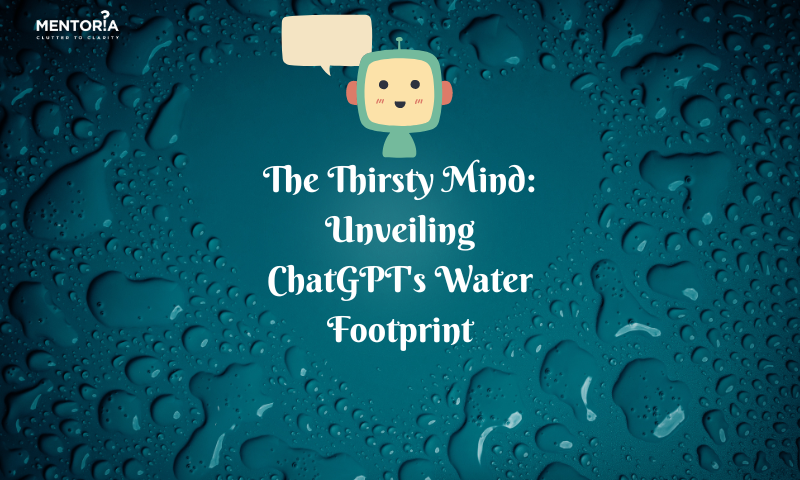The Thirsty Mind: Unveiling ChatGPT’s Water Footprint

Welcome, curious minds, to a captivating journey where we delve into the intriguing world of ChatGPT and its insatiable thirst for knowledge. But have you ever wondered if ChatGPT is also thirsty for something else—water? Join us as we embark on a thought-provoking exploration of ChatGPT’s water footprint, unravelling the surprising and often overlooked ways in which artificial intelligence can impact our precious water resources. From the virtual realm to the physical world, we’ll uncover the hidden connections and shed light on the importance of responsible AI development and sustainable practices. So, fasten your seatbelts and prepare to be amazed as we navigate the captivating intersection of AI and water conservation.
Unveiling The Water Footprint
When we talk about the water footprint of ChatGPT, we’re not referring to its ability to sip from a water bottle. Instead, we’re diving into the virtual realm where digital entities like ChatGPT consume something equally valuable—computational power and energy. The processes behind powering and training AI models like ChatGPT require significant energy inputs, indirectly contributing to their water footprint.
The Hidden Waters
Behind the scenes, ChatGPT’s existence involves a complex network of data centres, servers, and cooling systems that demand water for their operation. Cooling systems, in particular, require vast amounts of water for maintaining optimal temperatures and preventing overheating. Additionally, the energy sources powering these systems often rely on water-intensive methods such as hydroelectric power or fossil fuel extraction, further impacting ChatGPT’s water footprint.
ChatGPT’s Quenching Solutions
While the water footprint of AI systems like ChatGPT cannot be entirely eliminated, steps are being taken to reduce their impact. Innovations in data centre design, such as advanced cooling techniques and more energy-efficient hardware, are helping to minimise water consumption. Renewable energy sources like solar and wind power are also being integrated into data centres, reducing reliance on water-intensive energy production.
Sustainable Training Practices
The training process of AI models like ChatGPT is resource-intensive, including massive computational power and energy consumption. However, researchers and developers are exploring techniques to optimise this process and reduce the associated water footprint. Strategies such as model compression, distributed computing, and efficient algorithms are being implemented to achieve the same level of performance with reduced computational requirements.
Water-Smart AI For A Better Future
The discussion around ChatGPT’s water footprint serves as a reminder of the importance of sustainable development in the realm of artificial intelligence. As the demand for AI technology grows, it becomes crucial to integrate water-smart practices and prioritise the use of renewable energy sources. By adopting such measures, we can ensure that the digital revolution aligns with our environmental goals and minimises the strain on our water resources.
The Power Of Collaboration
Addressing the water footprint of AI is not the sole responsibility of developers and researchers—it requires a collective effort. Governments, organisations, and individuals can contribute to the cause by advocating for sustainable practices, supporting research and development of water-smart AI technologies, and embracing conscious decision-making when it comes to technology consumption.
Guiding The Path To A Sustainable Future With Mentoria
As we conclude our exploration of ChatGPT’s water footprint, it’s important to recognize that individual actions can make a significant impact. That’s where Mentoria comes in. With our expert guidance and support, we empower individuals to make informed decisions, contribute to sustainability efforts, and drive positive change in their communities. So, if you’re passionate about environmental conservation and want to make a difference, Mentoria is here to help you navigate the path towards a sustainable future.
By raising awareness, fostering innovation, and promoting sustainable practices, we can strike a balance between our thirst for knowledge and the preservation of our precious water resources. So, as we navigate the realm of AI, let’s keep our cups full of both curiosity and a commitment to a water-smart future. Remember, the thirst for knowledge should never outweigh our responsibility to protect the world we live in.










